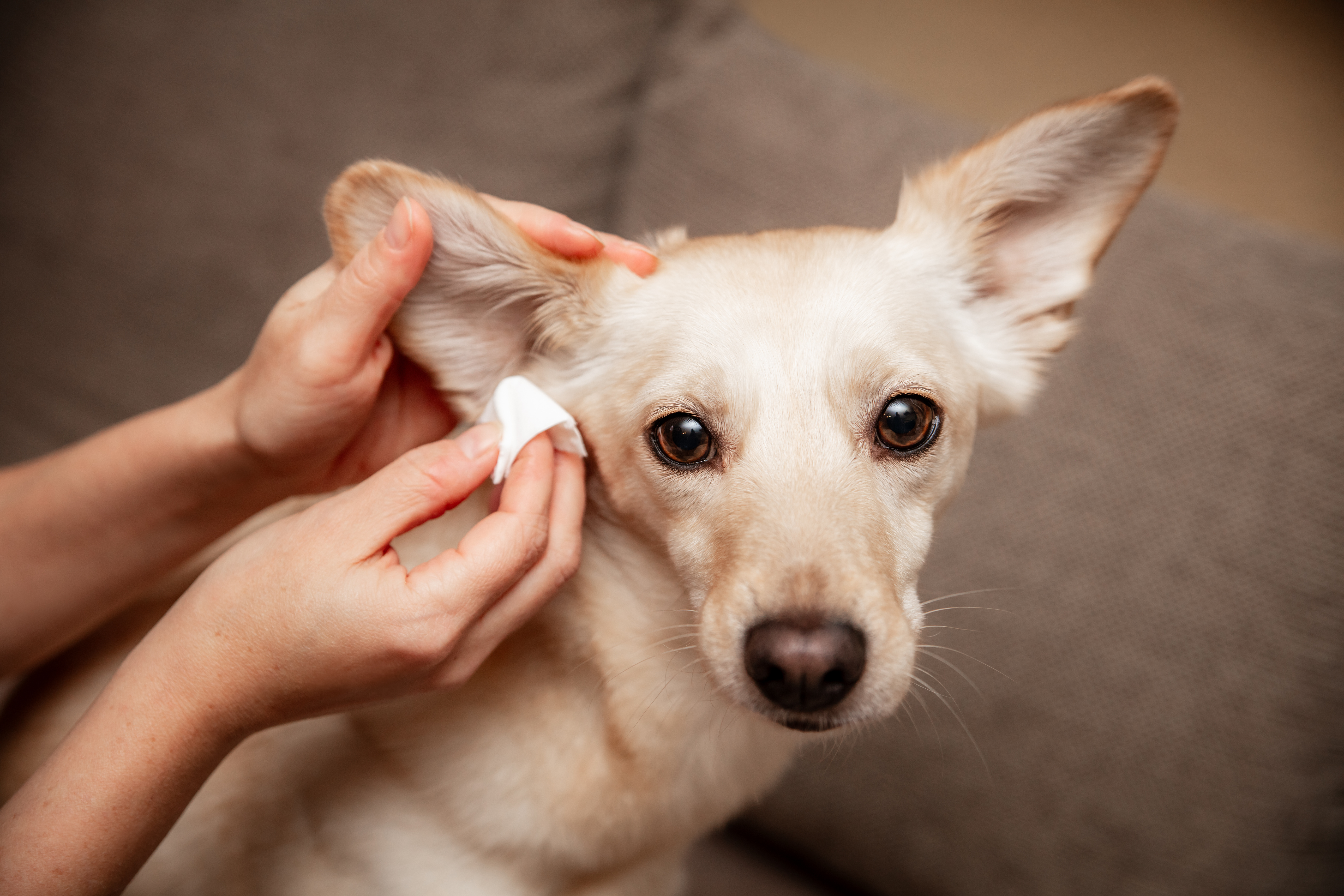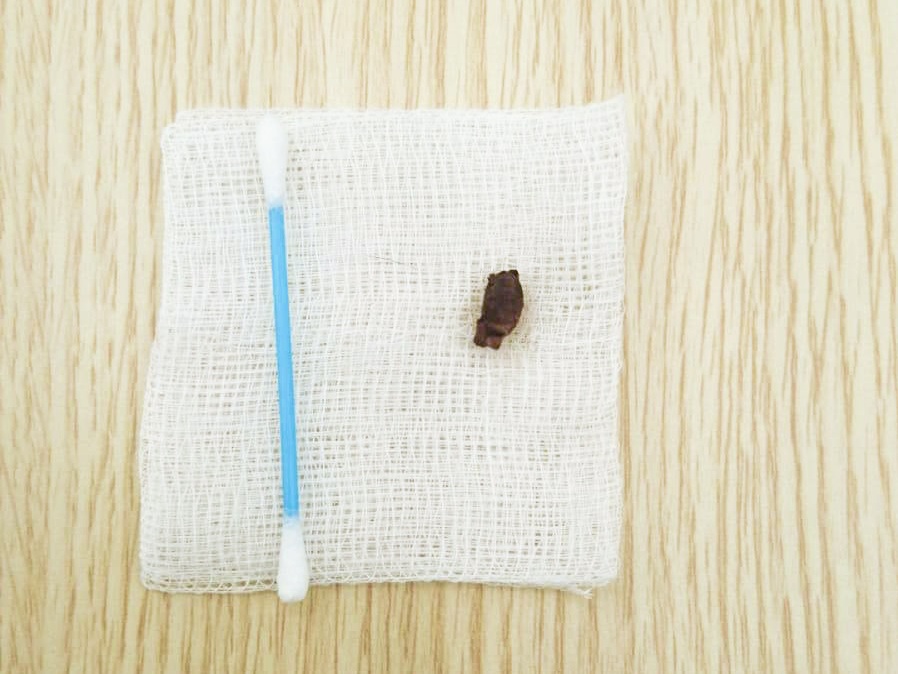What Every Pet Owner Should Know About Ear Infections
Article - 5 min read • Updated May 12, 2025
Medically reviewed by Dr. Claire Tan, BVSc (Qld.), BAppSc (Qld.)

Ear inflammation in pets, a.k.a. otitis, is more than just an itch or irritation. It’s one of the common reasons pets come to see us at Gaia Vets, especially dogs and cats. Whether your pet is a floppy-eared pup or a curious cat, ear health is an important but often overlooked part of their wellbeing.
Did You Know: Up to 20% of dogs suffer from some form of ear disease, that can affect one or both ears.
What Is Otitis?
Otitis simply refers to inflammation of the ear. It can affect not just dogs and cats, but also rabbits, guinea pigs, and other small pets. The causes can range from something as simple as an ear mite infestation to more complex issues such as tumours.
If left untreated, ear inflammation can progress into deeper parts of the ear and even affect your pet’s sense of balance, coordination, and hearing. That's why every Singaporean pet owner should be familiar with the basics of otitis and have it detected early.
Types of Ear Inflammation in Pets
1) Otitis Externa (External Ear Canal Inflammation)
This is the most common type. It affects the external ear canal and may cause itchiness, wax buildup, and a smelly odour. If neglected, it can lead to secondary infections.
2) Otitis Media (Middle Ear Inflammation)
Affects the middle ear which is deeper in, and is usually due to an untreated outer ear infection or a ruptured eardrum. Pets may show signs of pain, head shaking, or a tilted head.
3) Otitis Interna (Inner Ear Inflammation)
Affects the inner ear, including the vestibular system, which controls balance.
Symptoms may include:
- Sudden loss of balance
- Head tilting
- Involuntary eye movements (Nystagmus)
- Deafness
- Facial paralysis
This type is most severe and requires urgent veterinary attention.
Common Causes of Otitis in Pets
1. Parasites (Ear Mites)
Especially common in cats, rabbits, and hamsters, ear mite such as Otodectes cynotis cause intense itching and a dark, crumbly discharge (often described as looking like coffee grounds).
According to the Cornell Feline Health Center, up to 50% of ear infections in cats are linked to ear mites.
2. Improper Ear Cleaning or Trauma
Using cotton buds can push debris deeper into the ear or even rupture the eardrum. Unless you are very experienced and trained, we strongly discourage using cotton swabs in your pet’s ears.

3. Earwax, Hair, and Dead Skin Buildup
In breeds such as Poodles or Schnauzers, excess hair and wax in the ear canal can create a moist, dark environment perfect for bacterial or yeast growth.
4. Allergies and Irritants
- Environmental allergens (e.g. pollen, dust)
- Food allergies
- Foreign bodies (e.g. grass seeds)
- Excess moisture (after swimming or baths) is very common in humid Singapore
5. Underlying Conditions, Tumours or Polyps
- Cats with diabetes, FeLV, or FIV are more prone to chronic ear infections.
- Growths in the ear canal can block drainage and trap debris, leading to recurring inflammation and discomfort.
Are There Breeds at Higher Risk of Ear Infections?
Yes. Certain breeds are more susceptible to otitis due to their ear shape, hair density, or genetics:
- Cocker Spaniels and Golden Retrievers – Long, floppy ears trap moisture and reduce airflow.
- Poodles, Shih Tzus, Maltipoos and Cavapoos – Tend to have hairy ear canals which tend to create breeding grounds for bacteria and yeast.
- Singapore Specials or Adopted Cats - Often former strays and tend to have a higher risk of mites

Symptoms of Otitis in Dogs and Cats
Look out for these tell-tale signs:
- Scratching or pawing at the ears
- Head shaking or tilting
- Redness or swelling in the ear flap
- Dark, smelly discharge (often black or yellowish)
- Crusty debris around the ears
- Sudden loss of balance or coordination
- Loss of appetite or lethargy
- Reluctance to be touched near the head
In severe cases, your pet may show signs of neurological distress such as circling, stumbling, or facial drooping.
How Will My Vet Diagnose Ear Infections?
A diagnosis of otitis is possible after:
- An otoscope exam to look deep into the ear
- Conducting cytology (ear swab under microscope) to check for mites, yeast, or bacteria
- Conducting culture tests if resistant bacteria are suspected
- Drawing blood and doing urine tests to rule out systemic issues such as diabetes or autoimmune diseases
How to Prevent Ear Infections in Pets?
- Clean your pet’s ears properly – Use vet-approved cleaners and never insert cotton buds unless trained
- Dry ears thoroughly after baths or swims – Especially in breeds prone to otitis.
- Check for parasites regularly – Use preventative treatments for fleas, ticks, and mites.
- Watch for allergies – Recurring infections could be a sign of food or environmental sensitivities.
- Not skipping your pet’s annual health check - a physical exam by your vet can pick up many things you may miss
When to See a Vet for Your Pet’s Ear Issue?
If you notice any of the above symptoms, don’t delay. The earlier your vet can catch and treat otitis, the better the outcome and less likely it will progress into something serious such as permanent hearing loss or neurological damage.
Ear Infections in Pets Can Be More Than Skin Deep
Otitis may seem like a small issue, but it can be an indication of bigger health problems brewing under the surface. Whether it’s ear mites in cats, yeast infections in dogs, or an unexplained head tilt in your rabbit, it's always best to get it checked early.
Contact Gaia Vets today for a full ear exam or consult. We’re here to help because healthy ears mean a happier pet.